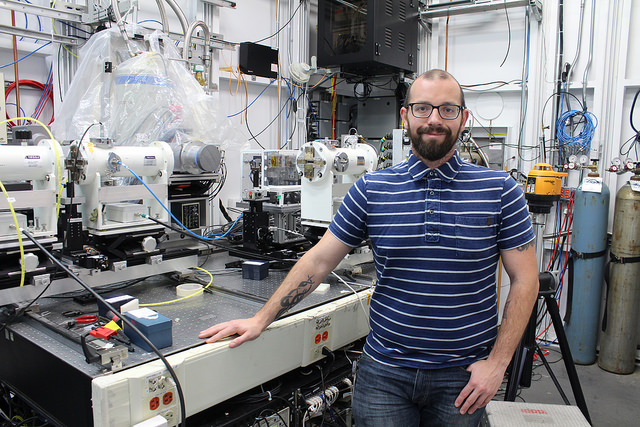AREVA and Canadian Light Source study environmental impact of uranium mines
One of Saskatchewan’s longest running uranium operators is working with the CLS to ensure its operations are sustainable now and protective of the environment for thousands of years into the future.
By Murray LyonsOne of Saskatchewan’s longest running uranium operators is working with the Canadian Light Source to ensure its operations are sustainable now and protective of the environment for thousands of years into the future.
The fruits of this co-operation are many and include the ability of AREVA Resources Canada Inc. to demonstrate to multiple regulators and local Indigenous communities that predictions made in its environmental impact statements for the McClean Lake mining and milling operation remain valid.
In particular, AREVA must demonstrate that its engineered tailings management facility, known as the JEB TMF, is performing well and will continue to do so as predicted. The JEB TMF was an open pit uranium deposit mined by AREVA in the mid-1990s. The JEB pit, upon completion of mining, was converted to a tailings management facility for permanent disposal of waste products, known as tailings, from the processing of ore from five open pits on the McClean Lake surface lease. It now manages tailings from the high grade ore produced at the Cigar Lake mine, about 80 km to the south of McClean Lake.
Every five years, AREVA must produce a report to show the long-term geochemical properties of the tailings are progressing as predicted. Research conducted at the Canadian Light Source provides the scientific evidence to support AREVA’s report.
“The CLS has not only provided us with a very important and unique service but our collaboration has advanced the scientific understanding of uranium mine tailings,” said Dale Huffman, AREVA’s vice president, health, safety, environment and regulatory relations.

The latest CLS scientist to get involved in studying uranium tailings is Newfoundland-born Peter Blanchard, who has just completed his doctorate in solid-state chemistry. While his thesis was not on mining tailings, the subject was right up his alley.
“The JEB TMF is designed to trap harmful elements contained within the mine tailings in a solid form that is stable over long periods of time. This is particularly important with respect to arsenic,” says Blanchard, lead author of a scientific paper recently published in Chemical Geology.
The key to creating safe tailings is to get heavy metals, such as arsenic, to bind up with another element (chemists use the term sequester) and thus form a solid and stable chemical compound that will stop the heavy metal from dissolving in water.
“Most mining operations rely on iron in the ores to sequester arsenic as an adsorbed species. It is not possible to sequester ores processed at the McClean Lake mill that way as the concentration of arsenic in the ore is too high,” explains Blanchard.
“The processes used by AREVA at the McClean Lake mill are unique in the mining industry in that ferric sulfate is added to the tailings slurry before being placed in the JEB TMF to sequester arsenic at a near-neutral pH, which was predicted to stabilize arsenic in a rock-like mineral known as scorodite. The mineral scorodite will be stable over geological time periods. In our study, not only were we able to identify scorodite in aged tailings collected from the TMF but we were also able to confirm that the majority of the arsenic in the TMF existed as scorodite.”
The uranium mine tailings research conducted on behalf of AREVA is an excellent example of the Canadian Light Source and its scientists collaborating with industries, says Jeff Cutler, chief strategic relations officer at the CLS.
“One of our priorities is to come alongside these industrial partners to provide them the scientific evidence and support they need to advance their businesses as they in turn contribute to the Canadian economy,” he said.
Blanchard, Peter ER, Lisa L. Van Loon, Joel W. Reid, Jeffrey N. Cutler, John Rowson, Kebbi A. Hughes, Caitlin B. Brown et al. "Investigating arsenic speciation in the JEB Tailings Management Facility at McClean Lake, Saskatchewan using X-ray absorption spectroscopy." Chemical Geology 466 (2017): 617-626. DOI: 10.1016/j.chemgeo.2017.07.014
To arrange an interview, contact:
Victoria Schramm
Communications Coordinator
Canadian Light Source
306-657-3516
victoria.schramm@lightsource.ca
